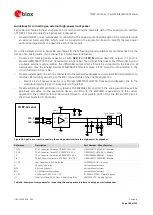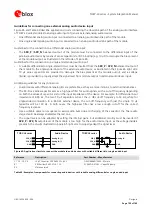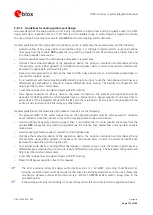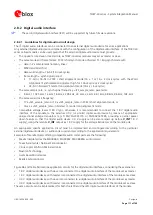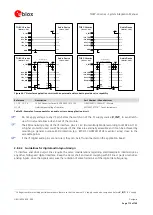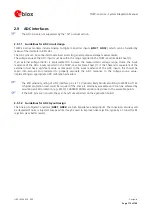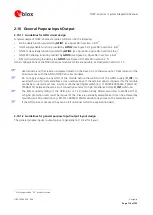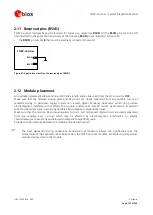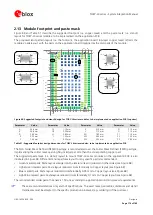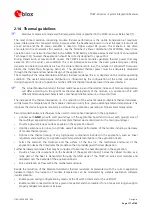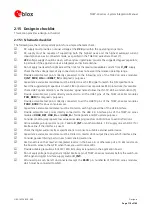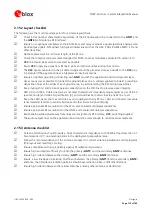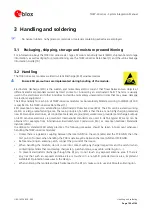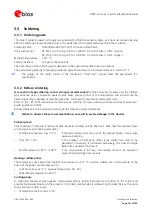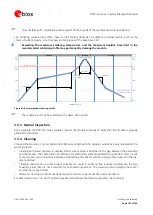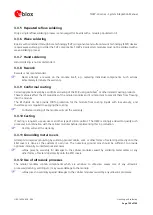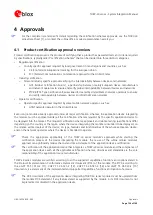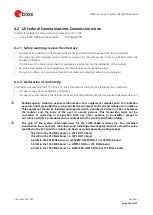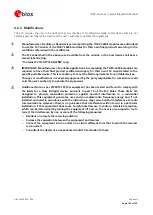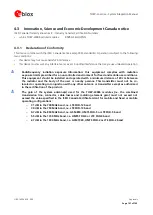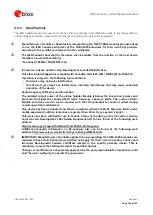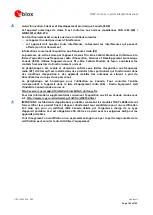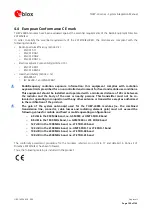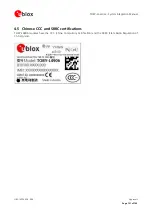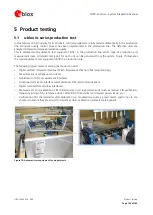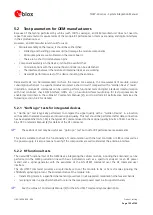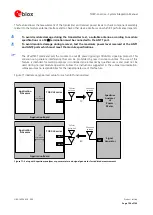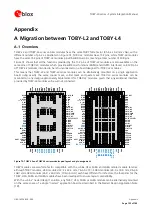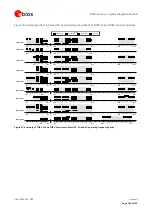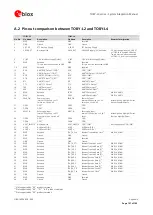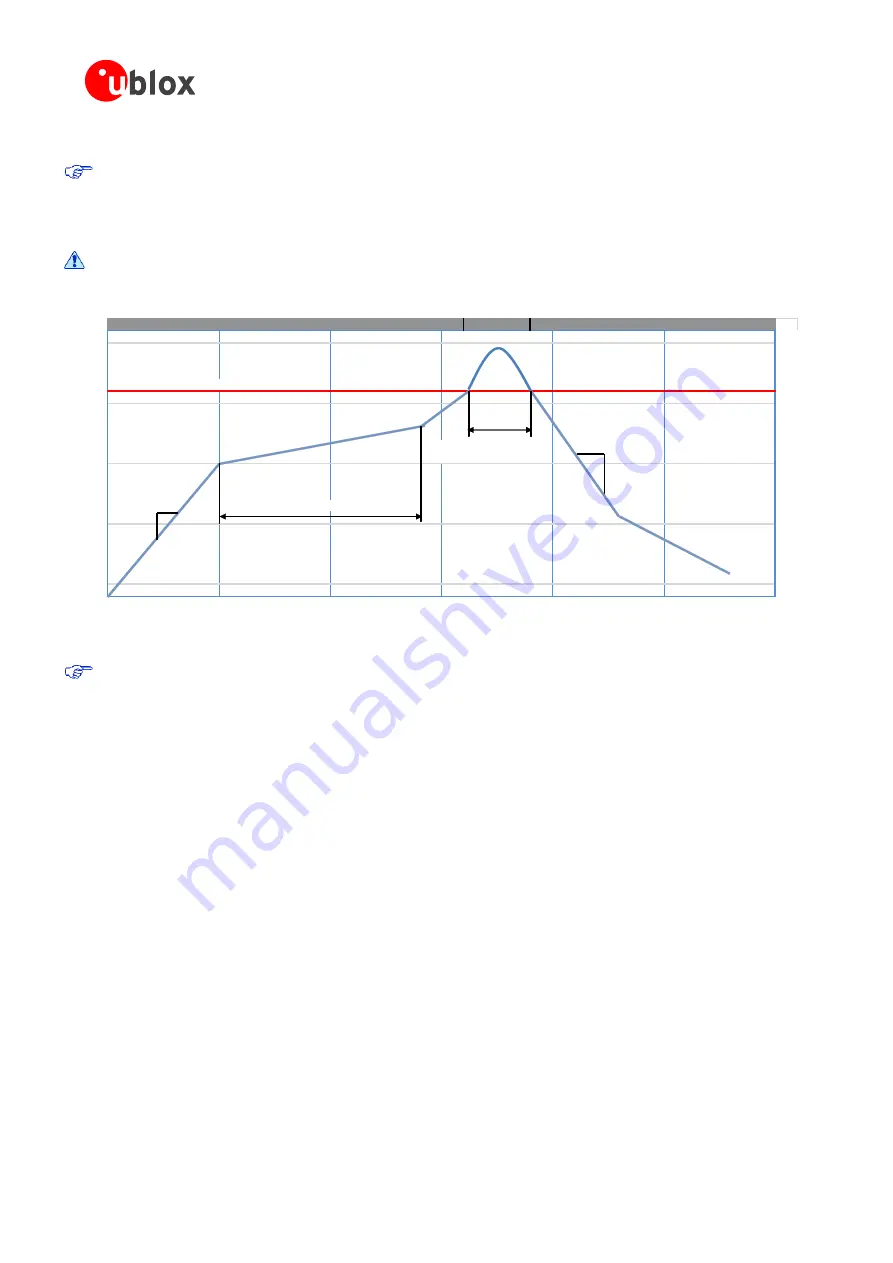
TOBY-L4 series - System Integration Manual
UBX-16024839 - R04
Handling and soldering
Page 122 of 143
To avoid falling off, modules should be placed on the topside of the motherboard during soldering.
The soldering temperature profile chosen at the factory depends on additional external factors, such as the
choice of soldering paste, size, thickness and properties of the base board, etc.
Exceeding the maximum soldering temperature and the maximum liquidus time limit in the
recommended soldering profile may permanently damage the module.
Preheat
Heating
Cooling
[°C]
Peak Temp. 245°C
[°C]
250
250
Liquidus Temperature
217
217
200
200
40 - 60 s
End Temp.
max 4°C/s
150 - 200°C
150
150
max 3°C/s
60 - 120 s
100
Typical Leadfree
100
Soldering Profile
50
50
Elapsed time [s]
Figure 69: Recommended soldering profile
The modules must not be soldered with a damp heat process.
3.3.3
Optical inspection
After soldering the TOBY-L4 series modules, inspect the modules optically to verify that the module is properly
aligned and centered.
3.3.4
Cleaning
Cleaning the modules is not recommended. Residues underneath the modules cannot be easily removed with a
washing process.
Cleaning with water will lead to capillary effects where water is absorbed in the gap between the baseboard
and the module. The combination of residues of soldering flux and encapsulated water leads to short circuits
or resistor-like interconnections between neighboring pads. Water will also damage the sticker and the ink-
jet printed text.
Cleaning with alcohol or other organic solvents can result in soldering flux residues flooding into the two
housings, areas that are not accessible for post-wash inspections. The solvent will also damage the sticker
and the ink-jet printed text.
Ultrasonic cleaning will permanently damage the module, in particular the quartz oscillators.
For best results, use a "no clean" soldering paste and eliminate the cleaning step after the soldering.

